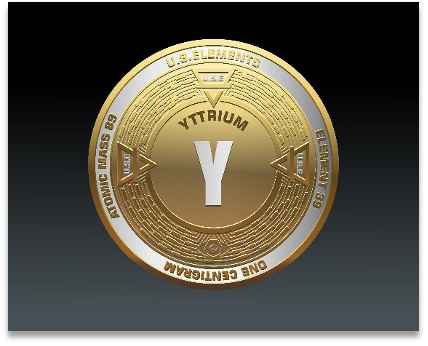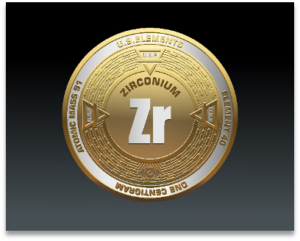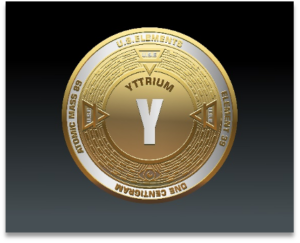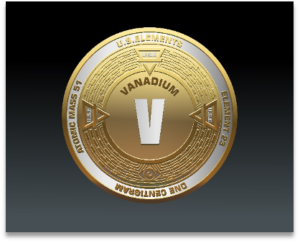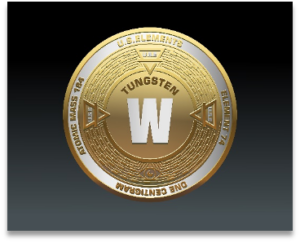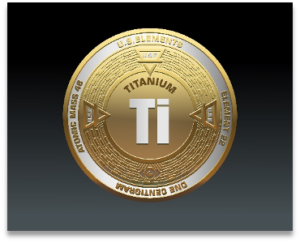Yttrium may not be a household name, but this rare earth element plays a vital role in some of the most cutting-edge technologies. From strengthening high-performance alloys to enabling powerful laser systems, yttrium’s unique properties make it indispensable. In this 53rd installment of the Critical Minerals Series, we dive into why yttrium is crucial to America’s technological future and the steps needed to secure its domestic supply.
Why the U.S. Needs Yttrium
Yttrium is essential for numerous advanced applications:
- Aerospace and Defense: Yttrium is a key component in thermal barrier coatings used in jet engines and missile systems, helping materials withstand extreme temperatures.
- Medical Innovations: Yttrium-90 is a radioactive isotope used in cancer treatment, particularly in targeted radiation therapies.
- Electronics and Optics: Yttrium-stabilized zirconia is critical for solid oxide fuel cells and high-performance optical materials, including camera lenses and night-vision devices.
- High-Strength Alloys: Adding yttrium to magnesium and aluminum alloys improves strength, corrosion resistance, and thermal stability, making it vital for structural components in automotive and aerospace industries.
Where It’s Found Domestically
Yttrium is primarily found in rare earth mineral deposits, often alongside elements such as neodymium and dysprosium. Notable U.S. locations include:
- Mountain Pass, California: The most significant rare earth mine in the U.S., producing yttrium as a byproduct.
- Bear Lodge, Wyoming: A promising rare earth deposit with yttrium potential.
- Texas and Alaska: These regions contain heavy rare earth element (HREE) deposits, where yttrium is often found.
Economic Realities
Despite its importance, the U.S. imports nearly all of its yttrium, primarily from China. The global market for yttrium is highly dependent on rare earth refining operations, most of which are controlled by Chinese entities. Prices fluctuate based on supply chain constraints, geopolitical tensions, and demand from high-tech industries.
Processing and Technological Innovations
Extracting and refining yttrium requires advanced separation techniques due to its coexistence with other rare earth elements. Emerging technologies aim to improve efficiency and environmental sustainability:
- Solvent Extraction: The most common method for separating yttrium from other rare earths.
- Ion-Exchange and Membrane Filtration: These methods offer potential improvements in purification with lower environmental impact.
- Recycling and Waste Recovery: Industrial waste from phosphor coatings, magnets, and catalysts contains recoverable yttrium, presenting an opportunity for a secondary supply stream.
Abundance and Waste Recovery Potential
Yttrium is found in the Earth’s crust at approximately 30 parts per million, making it more abundant than lead. However, its dispersed nature means concentrated deposits are rare. Recycling yttrium from end-of-life electronics, medical devices, and industrial byproducts could help supplement primary supply sources.
Time to Market
Developing a new yttrium supply chain from mining to refined material can take 5-10 years due to permitting, processing infrastructure, and technological challenges. Investments in domestic refining and recycling could shorten this timeline significantly.
Current and Future Applications
- Next-Generation Energy: Yttrium-stabilized zirconia is critical for efficient fuel cells that could revolutionize energy storage and transportation.
- Laser Systems: Yttrium aluminum garnet (YAG) lasers are widely used in medical, industrial, and military applications.
- Advanced Ceramics: Used in spacecraft, high-performance brakes, and wear-resistant coatings.
Impact on Everyday Life
Yttrium-enhanced materials impact numerous aspects of daily life, from the LED displays in smartphones and televisions to the medical treatments that save lives. Its contributions to energy efficiency and high-tech manufacturing ensure that modern conveniences remain possible.
Consequences of Supply Shortages
A disruption in yttrium supply could have widespread consequences:
- Defense Readiness: Reduced availability for jet engines, missile systems, and laser targeting.
- Medical Shortages: Limited access to yttrium-90 for cancer treatments.
- Electronics Manufacturing Delays: Supply constraints for LED screens, sensors, and fuel cells.
Import Dependence and Supply Chain Risks
The U.S. currently sources nearly all of its yttrium from China, with minor imports from Estonia, Japan, and France. Heavy reliance on foreign refining capabilities puts America at risk of supply disruptions due to geopolitical tensions and export restrictions.
Securing America’s Future in Yttrium
To reduce dependence on foreign yttrium supplies, the U.S. must:
- Expand Domestic Mining: Invest in rare earth mining projects with yttrium-rich deposits.
- Develop Refining Capabilities: Establish domestic processing facilities to reduce reliance on Chinese supply chains.
- Increase Recycling Efforts: Recover yttrium from industrial waste, old electronics, and phosphor coatings.
Conclusion
As we conclude the 53rd entry in the Critical Minerals Series, it’s clear that yttrium is a crucial element in securing America’s technological and defense future. With strategic investments in mining, refining, and recycling, the U.S. can bolster its yttrium supply and reduce dependence on foreign sources.
The path to mineral independence continues. Stay with us as we explore the next vital element shaping America’s future!

